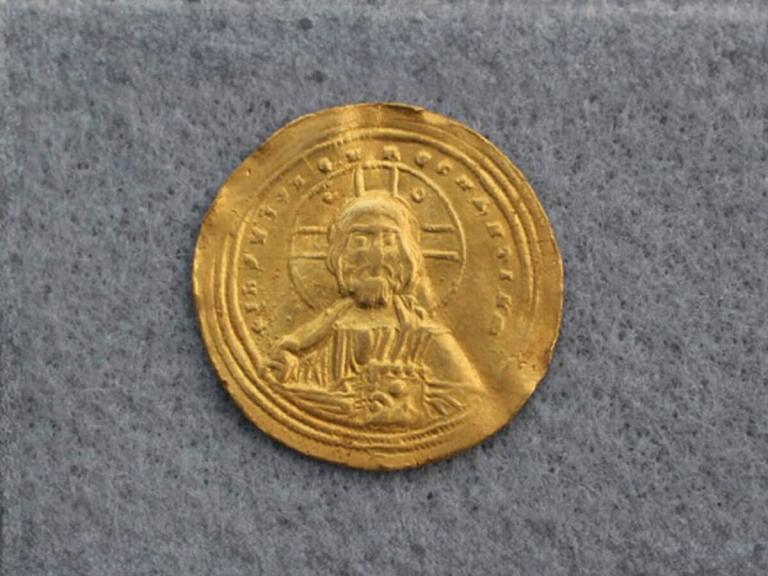
Norway’s Innlandet County Municipality has recently revealed the discovery of a very rare golden coin that features the face of Jesus Christ. According to a statement from the County, the coin, referred to as a “histamenon nomisma,” was found by a metal detectorist in the mountains in Vestre Slidre. Such gold coins were first minted in 960 AD by the Byzantine Empire, also known as Eastern Roman Empire, whose capital was Constantinople (now modern-day Istanbul).
This particular coin appears to have been minted some time between 977 AD and 1025 due to the style of the dotted triple edge along the coin, which is particular to that time period. One side of the coin features an image of Jesus holding a Bible, while the other appears to depict the two co-emperors Basil II and Constatine VIII, brothers who ruled together at the time of the coin’s minting. The coin also featured two inscriptions. One, in Latin, says “Jesus Christ, King of those who reign.” The other inscription, written in Greek, says, “Basil and Constantine, emperors of the Romans.”
Istanbul is some 1,600 miles away from where the coin was found, making its discovery an interesting puzzle. “The coin is unique in the Norwegian context,” said the statement. “It has held up exceptionally well. The coin appears largely unchanged from when it was lost, perhaps a thousand years ago.” The statement then went on to speculate some ways the coin could have made its way to Norway, starting with the possibility of Harald Hardråde bringing it over. Known in English as Harald Hardrada or Harald III Sigurdsson, Hardrada, known as “the last real Viking,” had fled his homeland first to Kiev and then to Constantinople, where he fought as a member of the elite Varangian Guard. The County speculated the coin could have been part of Hardrada’s salary that he received while working in the Guard. Guards were permitted to loot palaces after an emperor died and take whatever valuables they could find. During his tenure with the Guard, Hardrada saw three emperors die. According to the statement, Hardrada sent his treasure to Kiev in the care of Prince Jaroslav, partly to pay taxes and partly to pay towards a dowry so that Hardrada might marry Jaroslav’s daughter, Elliptical. When Hardrada returned to Norway in 1046, he was a rich man and would go on to eventually become something of a Viking king until his death in 1066 during the Norman conquest of England.
Another speculation was that the coin could have come to Norway through the “salt roads,” transport roads used to trade salt between East and West. Such a coin might have been traded with herring in exchange for reindeer skins and antlers from the east. There is also the possibility that the coin could have been lost by a traveling clergyman, since the Valdres was a part of the Bjørgvin diocese at the time and clergymen often walked a route in the region by the name of Bispevegen. The statement noted that the coin had been found in the fall, too late for the County to do further investigation but that it hoped to do so when the field season starts again in 2024.


